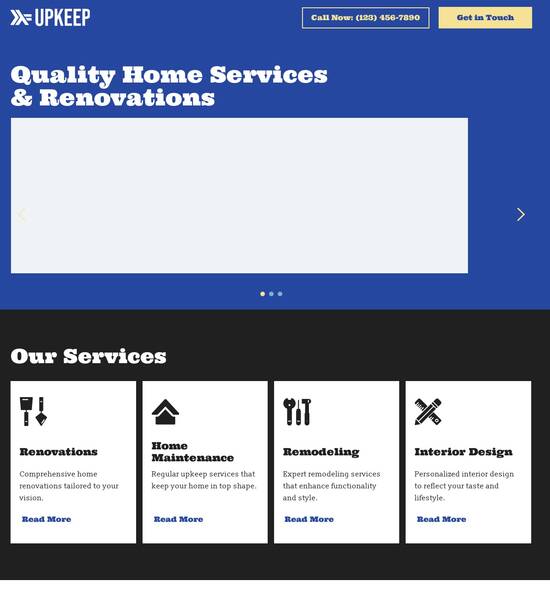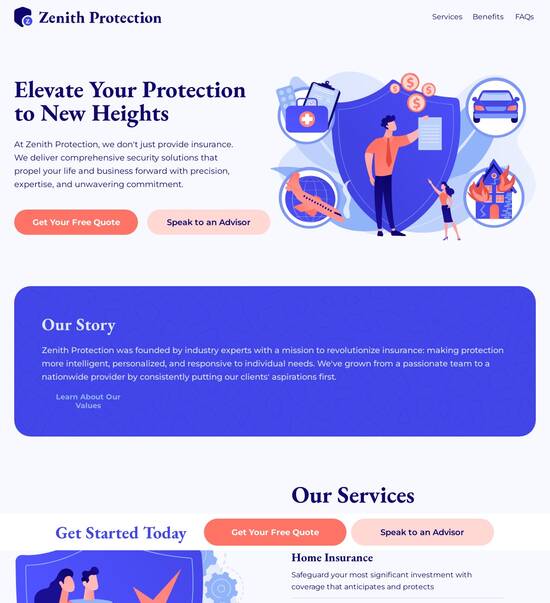
Next.js optimized landing page templates
Use TemplateAbout template
Manage Next.js optimized landing page templates in a few clicks. Achieve business success with user-friendly and comprehensive no-code tools.
Recommended templates

Easy to build without coding
With the intuitive drag-and-drop builder, anyone on your team can create high-converting pages without any knowledge of code or design. Make enhancements to your landing page with custom widgets using Javascript, HTML/CSS, or third-party scripts.

Multiple layouts for any industry and goal
Select from 500+ landing page layouts built to boost conversions across industry-specific scenarios. Customize them by adjusting fonts, adding images, and generating on-brand content with the AI assistant. Quickly scale with Instablocks® and Global Blocks that you can save, reuse, and update globally.

Loads fast and looks polished on any device
Every template is responsive, which means they present professionally on any device and load blazingly fast with our Thor Render Engine. You can also power them up with Google AMP technology to deliver an unparalleled mobile experience and drive higher conversions.

Robust analytics & experimentation
Get real-time updates and reporting across all your devices, showing the number of visitors, conversions, cost-per-visitor, and cost-per-lead. Launch AI-powered experiments, run A/B tests, and use heatmaps to analyze user behavior, then optimize your landing page to maximize conversions.







Easy to build without coding
With the intuitive drag-and-drop builder, anyone on your team can create high-converting pages without any knowledge of code or design. Make enhancements to your landing page with custom widgets using Javascript, HTML/CSS, or third-party scripts.
Multiple layouts for any industry and goal
Select from 500+ landing page layouts built to boost conversions across industry-specific scenarios. Customize them by adjusting fonts, adding images, and generating on-brand content with the AI assistant. Quickly scale with Instablocks® and Global Blocks that you can save, reuse, and update globally.
Loads fast and looks polished on any device
Every template is responsive, which means they present professionally on any device and load blazingly fast with our Thor Render Engine.
Robust analytics & experimentation
Get real-time updates and reporting across all your devices, showing the number of visitors, conversions, cost-per-visitor, and cost-per-lead. Launch AI-powered experiments, run A/B tests, and use heatmaps to analyze user behavior, then optimize your landing page to maximize conversions.
All the features you need to build nextjs landing pages
Explore more featuresLearn how to build next js landing page
Frequently asked questions about nextjs landing page templates
Leading the way in building high-performing landing pages





Next js landing page template: Your ultimate how-to guide
In the fast-paced world of digital marketing, leveraging an effective landing page can make or break your campaign. Instapage offers powerful templates and optimization tools designed to enhance your marketing strategy. This guide provides a step-by-step approach to building your landing pages using Instapage's robust capabilities to drive engagement and conversion.
Step 1: Choose the right landing page template
Selecting a high-converting template is crucial for the success of your landing page. With Instapage, you have access to over 100 ready-to-use, conversion-focused templates that can be easily customized for your needs. Here are the key aspects to consider when making your selection:
- Target audience alignment: Ensure the template resonates with your specific audience segments, from tech-savvy users to traditional consumers.
- Mobile responsiveness: Choose templates that are optimized for various devices, ensuring a seamless user experience.
- Lead generation features: Look for templates that include integrated forms or widgets designed for maximum lead capture.
Step 2: Customize your landing page with Instablocks
Once you've selected a template, customizing it with Instablocks allows you to create unique sections that fit your brand's identity. Instablocks are reusable sections that make page building faster and more efficient. Here's a closer look at how to use them effectively:
- Brand elements: Incorporate consistent branding elements such as logos, colors, and fonts to strengthen brand recognition.
- Personalized content: Use dynamic text replacement to tailor content for different audience segments, enhancing engagement.
- Calls to action: Make sure your CTAs are strategically placed and visually appealing to encourage conversions.
Step 3: Optimize for conversions
Optimization doesn't stop at page creation; it's an ongoing process. Instapage provides various tools to help you improve conversion rates continuously. Key optimization strategies include:
- A/B testing: Conduct experiments to find out which elements work best; try different headlines, images, and CTAs.
- Heatmaps: Utilize heatmaps to analyze user behavior on your page, identifying which areas capture the most attention.
- Analytics dashboard: Regularly check performance metrics to understand where users drop off and adjust your strategy accordingly.
By following these steps, marketers can create landing pages that not only attract visitors but also convert them into leads or customers.
Instapage empowers your marketing efforts with tools designed for not just any campaign, but for successful ones that yield high ROI.
Ready to take your landing pages to the next level? Sign up for Instapage today and start crafting pages that convert!
People also ask about nextjs landing page
Unveiling the future of landing pages: Next.js optimized landing page template
Understanding Next.js and its role in web development
Next.js is a powerful React framework that enables developers to build scalable and optimized web applications. It combines the best of client-side and server-side rendering, allowing for highly efficient pages that are fast and responsive. Built on the foundation of React, Next.js provides structure to developers and offers features like client-side routing, automatic code splitting, and support for API routes—all of which make web development more straightforward and efficient.
One of the standout features of Next.js is its ability to facilitate server-side rendering (SSR) and static site generation (SSG). SSR generates the HTML on the server for each request and serves it to the client, while SSG pre-renders pages at build time. This flexibility not only enhances performance but also significantly improves user experience, as users can access fully rendered pages quickly without waiting for JavaScript to load.
Next.js is particularly beneficial for landing pages because it can quickly serve static assets and deliver personalized experiences tailored to user behavior. Using Next.js for landing pages guarantees a competitive advantage over traditional single-page applications, especially regarding speed and SEO performance.
Why choose Next.js for landing pages?
When it comes to landing pages, performance is paramount. Next.js is particularly adept at optimizing page speed, which is a crucial factor in user retention and conversion rates. With built-in image optimization features, next-gen formats, and automatic code splitting, Next.js reduces page load times, thereby enhancing user interaction. Faster websites lead to lower bounce rates, meaning more potential customers stay on the page to explore offerings.
Moreover, Next.js supports SEO best practices more effectively than many other frameworks. It offers automatic pre-rendering for pages, which allows search engines to index sites more efficiently. Furthermore, Next.js enables developers to manage metadata, such as title tags and meta descriptions, programmatically. This control enhances search visibility and organic rankings.
The significance of landing pages in digital strategy
Landing pages are specialized web pages designed to guide visitors towards a specific outcome, typically conversion. They are essential elements of any digital marketing strategy, emphasizing clear messaging and straightforward user paths. A focused approach to design can drive user engagement and increase conversions, highlighting the importance of having a strong landing page in any advertising campaign.
Focused messaging: Landing pages deliver concise information, making it easy for users to understand the value being offered.
Clear conversion goals: Each landing page should have a unique goal, whether it’s signing up for a newsletter or encouraging product purchases.
User experience: The design and layout should facilitate an effortless user journey, leading visitors naturally towards desired actions.
Startups particularly benefit from dedicated landing pages with essential features. Unlike established businesses, which may have brand recognition and trust built up over time, startups must earn credibility quickly. Thus, the layout and elements of their landing pages must be geared toward building trust and presenting clear value propositions.
Key components of a Next.js optimized landing page template
An effective landing page is composed of several core elements that work together to drive conversions. A strong headline grabs attention and engages visitors, while a subheadline provides additional context to the key message. The call to action (CTA) should be prominent, compelling users to take the specific action desired, whether that be subscribing, purchasing, or signing up. Integrating high-quality images and engaging videos enhances visual appeal, creating a memorable user experience.
Engaging headlines: A strong headline directly speaks to the target audience's needs.
Subheadlines: They provide context and reinforce the main message.
CTAs: Clear and actionable language encourages user interaction.
Visual elements: Images and videos create an engaging experience.
UI/UX considerations are crucial for any landing page, particularly regarding responsive design and accessibility. In a multi-device world, landing pages must look and function flawlessly on desktops, tablets, and smartphones. Additionally, designers should prioritize layout strategies, such as grid systems and whitespace, to create an aesthetically pleasing experience without overwhelming users.
Leveraging Next.js features to enhance template performance
Next.js streamlines speed optimization through several key techniques. One notable feature is the Next.js Image component, which not only optimizes images for different sizes and formats but also enhances loading speeds through lazy loading. Code splitting, another impactful performance optimization, allows developers to load only the necessary scripts for the page, minimizing the initial load time and improving overall responsiveness.
Image optimization: Automatically optimizes and serves images in the most efficient format.
Code splitting: Only loads required components, enhancing initial load speed.
Dynamic imports: Facilitates faster page rendering by loading components only when needed.
SEO best practices are seamlessly integrated in Next.js, which allows developers to create customizable head tags. This capability enables specific optimizations for search visibility. Additionally, structured data can be managed within the framework, enriching the information provided to search engines and improving how search results appear on SERPs.
Crafting personalized experiences with dynamic content
Personalization can significantly enhance landing page effectiveness. By utilizing user data, marketers can deliver tailored content that resonates with specific audience segments. For instance, different headlines or CTAs can be tested based on user demographics, significantly boosting engagement rates. A/B testing capabilities enable marketers to experiment with various elements on the page to determine what works best.
User data utilization: Tailors content to different audience segments.
A/B testing: Facilitates ongoing optimization through experimentation.
Real-time adjustments: Quick response to user interactions to improve the overall experience.
Integrating analytics tools offers insight into user interactions with landing pages. By tracking behaviors, marketers can glean valuable feedback to identify strengths and areas for improvement. These data-driven actions can lead to enhanced conversion rates, ultimately maximizing the returns on digital marketing investments.
Designing for different audiences: The indie hacker perspective
Indie hackers often face unique challenges when creating landing pages. They may lack the resources or brand recognition of larger companies, making it essential for their landing pages to establish credibility quickly. An optimized Next.js template provides just the right mix of professionalism and relatability, helping to overcome the hurdles of attracting target customers.
To resonate with the indie hacker audience, templates should be tailored to reflect their specific mindset and needs. Crafting copy that speaks to their experience and incorporating visuals that reflect their branding can build trust and engagement. Utilizing elements that showcase testimonials or success stories can further enhance credibility, making potential customers feel more connected to the brand.
The wide range of customization options in Next.js templates
Next.js templates offer a variety of customizable components, allowing teams to build landing pages that suit their specific needs. Pre-built components, such as lead capture forms and trust badges, can be easily integrated into landing pages. Employing these high-impact elements not only saves development time but also helps to maintain a consistent user experience.
Forms and lead capture: Essential for acquiring user information.
Testimonials: Establish trust and assurance through social proof.
Custom components: Flexibility to develop specific features as needed.
For businesses with unique requirements, creating custom components is entirely feasible with Next.js. Custom hooks and APIs can be implemented to enhance functionality based on user feedback or market needs. This adaptability opens many possibilities, allowing businesses to extend their templates for broader applications.
The effort behind effective landing page creation
Developing an effective landing page can be a daunting task. However, leveraging Next.js simplifies the process significantly. Integration with headless content management systems (CMS) allows for easy content management while streamlining development. Constituting a combined effort from marketing and IT departments can further enhance both design consistency and messaging across all digital touchpoints.
Headless CMS integration: Simplifies content management and updates.
Collaboration tools: Enables real-time feedback and rapid iteration.
Streamlined design processes: fosters consistency and quality across all landing pages.
Successful case studies highlight startups that have employed Next.js templates to great effect. These examples showcase how optimized landing pages can lead to measurable improvements in conversion rates, demonstrating the importance of continuous iteration and data-driven enhancements.
Future trends in landing page optimization
As web development evolves, emerging technologies will play an increasingly vital role in how landing pages are designed and optimized. Artificial intelligence (AI) and machine learning are beginning to shape personalization strategies, enabling even more tailored user experiences. By analyzing user behavior, these technologies can predict the best content to display, empowering marketers to create impactful landing pages.
AI personalization: Provides tailored user experiences based on analysis.
Voice search readiness: Improves accessibility for users who rely on voice commands.
Anticipating shifts in behavior: Adapting templates to evolving user preferences.
Marketers must remain agile and responsive to changing user habits and preferences as digital engagement shifts. Adapting landing page templates to meet these evolving expectations will be crucial for maintaining a competitive advantage.
Conclusion: The next-step evolution of landing pages
The evolution of landing pages represents a continuous journey of optimization and adaptation. Next.js templates offer robust features and benefits that not only cater to immediate needs but also anticipate future trends in web development. The ability to customize, optimize, and personalize becomes essential in today’s fast-paced digital landscape, particularly for marketers focused on delivering relevant landing page experiences.
Embracing these technologies and strategies will propel marketers toward achieving greater conversion rates, thus enhancing brand trust and customer loyalty. Ongoing learning and adaptation will be the keys to success in leveraging Next.js optimized landing pages for impactful digital strategies.
Ready to skyrocket conversions?
Supercharge your ad campaigns with high-performing landing pages
Get started














